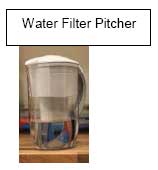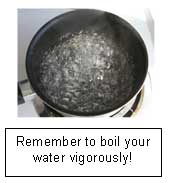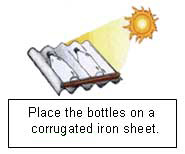Why This is Important
Water filtering removes large contaminants. Eliminating the smallest microorganisms requires water purification. These microorganisms can make you very sick when there may be little or no medical care available. They are found even in the most pristine mountain streams.
How to Purify Water in an Emergency
Step 1: Preliminary cleaning (for dirty or cloudy water)
- Let water sit in containers for a day to allow solid materials to settle. Siphon water from the center and middle of the container.
- Put this water through several layers of coffee filters or clean cloth.
Step 2: Treat the water using any of these methods:

- Water purifiers and filters.Consider existing in-house water filters, especially those that come with a pitcher. Caution: make sure the filter removes microorganisms, not just chemical taste. Small personal and family-sized filters are available in camping supply stores and on the internet.
- Chemical treatment. The American Red Cross recommends 8 drops of unscented bleach (look for "sodium hypochlorite" on the label) to each 2-liter bottle of clear water and 16 drops per gallon. Shake and let stand for 30 minutes. There should be a slight chlorine odor. If not, repeat the treatment.
NOTE: After putting bleach in the bottle and stirring, slosh some of the water in the cap and rim of the bottle or bucket. This will disinfect these areas.
For more information, see Food and Water in an Emergency
- Boiling. Boil water for 1-2 minutes at a vigorous boil (NOT a simmer). This method uses heat energy, which may be scarce.

- Solar water disinfection (SODIS). If you have no bleach, and cannot boil your water, consider solar water disinfection. This requires relatively clear (not muddy) water, a favorable location (Southern US) and good weather conditions.
- Go to Solar Water Disinfection for requirements and limitations of this system.
Step 3: Taste enhancement. - Before boiling water, add a pinch of salt.
- For boiled or chemically-treated water, aerate the water by pouring it from one container to another several times.
Additional Information
